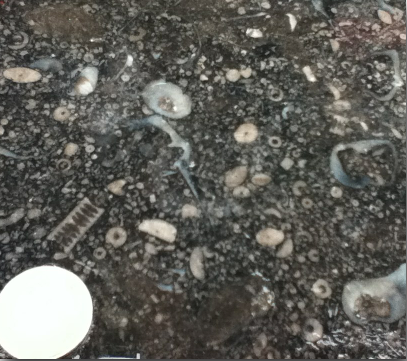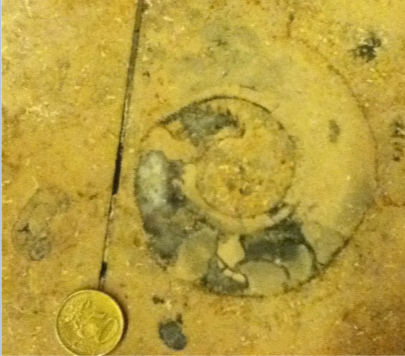Urban fossils of Brussels



Limestone slabs used as paving stones are well polished, specially in pedestrian streets, where the combination of abundant rain and thousands of daily steps has created smooth surfaces. Fossils are very clearly seen on this polished surfaces, creating a distinctive contrast with the dark matrix.


If you look at the surface of this limestone in detail, it preserves small fossil fragments. Sometimes, these fragments are the main element, so the whole rock is actually an aggregate of fossils. However, these fossils are often embedded in a dark, fine grained matrix of carbonate.

The most common fossil groups preserved in this limestone are corals and crinoids. The largest fossils are usually coral colonies; some of these colonies preserve the internal structure that individual corallites can actually be recognised. Crinoid fossils are represented by tiny fragments of their stems and arms, made of calcareous ossicles.

Brachiopod fossils are also relatively common in these paving stones. These fossils are usually fragmented and their shape depends on the orientation of the shell relatively to the stone surface.

There is another site for urban fossil lovers in Brussels: Le Grand Café, in the city center. The floor of this cafeteria is paved with a brown limestone that preserves beautiful fossils. The most impressive remains of ancient life are ammonites, some of them several centimetres in diameter.
